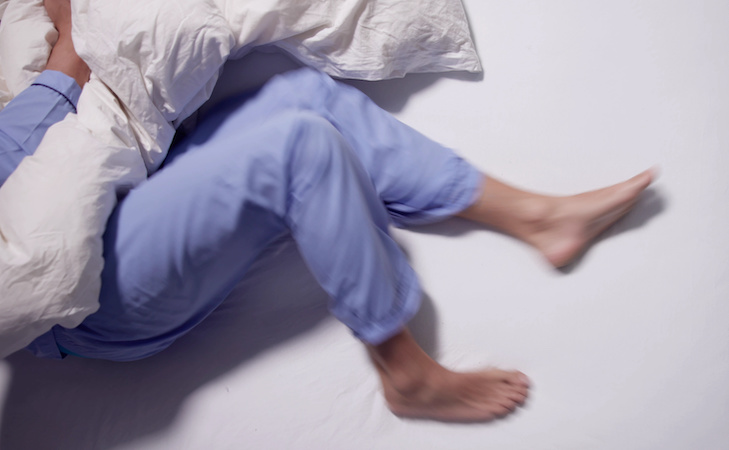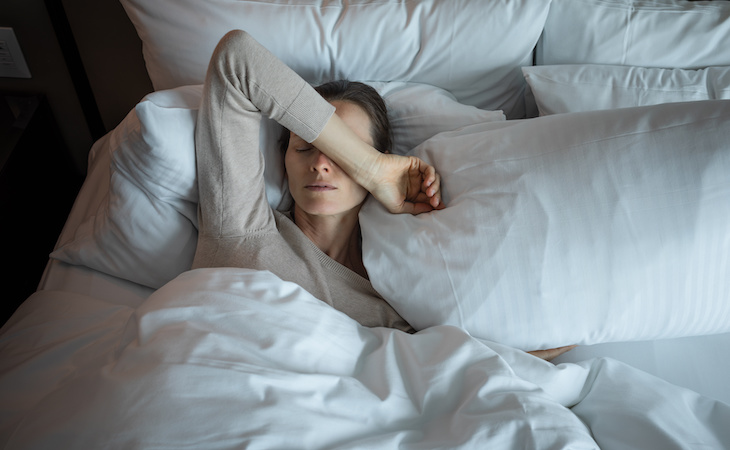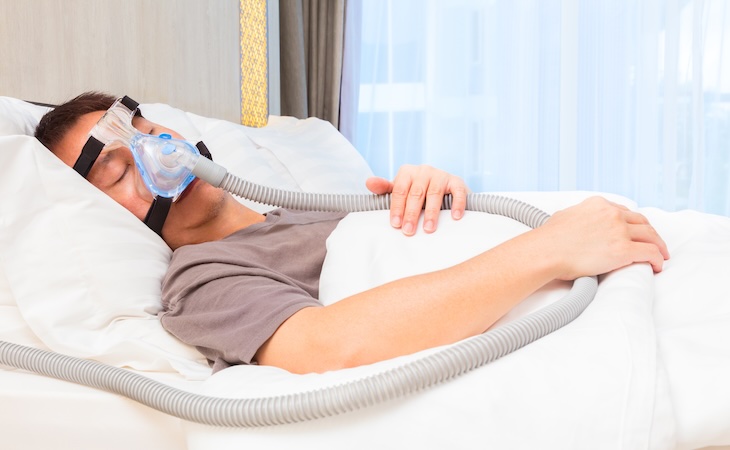Everyone has trouble falling asleep once in a while. If you have restless legs syndrome (RLS), getting a good night’s sleep can feel like a daily hurdle. RLS is a common disorder, but what exactly causes it?
Keep reading to learn about the causes, symptoms, and treatment options for RLS.
What is restless legs syndrome?
Restless legs syndrome (RLS), also called Willis-Ekbom Disease, is a sleep and movement disorder characterized by a strong, almost irresistible urge to move your legs while resting. [3] The urge to move is often caused by general discomfort, throbbing, or itching sensations in the legs.
“RLS is a surprisingly common cause of insomnia in my patients, many of whom did not even realize such a condition exists,” says Alex Dimitriu, MD, a double-board certified sleep medicine physician and psychiatrist, and the founder of Menlo Park Psychiatry & Sleep Medicine.
What causes restless legs syndrome?
The exact causes of RLS are unknown, but Dimitriu says genetics, dopamine dysregulation, and iron deficiency may play a role. Magnesium deficiency may also be a contributing factor. [4] “It can also be seen in certain medical situations like pregnancy or kidney disease,” he says.
There are lifestyle factors too, like drinking alcohol or ingesting too much caffeine, that can exacerbate or contribute to RLS. [1]
Ultimately, cases of RLS may be caused by a combination of genetic and environmental factors. [3] The likelihood of developing RLS increases with age—this condition affects up to 4% of children and 10% of adults, according to the National Library of Medicine’s MedlinePlus. [1, 5]
What does restless legs syndrome feel like?
People with RLS feel a strong urge to move their legs while resting, but the specific sensations triggering the urge can vary from person to person. If you have RLS, you might experience: [2]
- Aching or throbbing legs at night
- Itching or crawling sensations on your legs when resting
- Twitching or jerking legs when trying to fall asleep
- A sense of relief when you move your legs
How is restless legs syndrome diagnosed?
There isn’t a specific test to diagnose RLS, [1] but healthcare providers may ask questions about your symptoms from the International Restless Legs Study Group criteria to help diagnose it. [3, 6, 7]
Getting a diagnosis requires meeting with a healthcare provider to discuss your family and medical history, plus the type, frequency, and severity of your symptoms. [1]
From there, your doctor might suggest blood tests to check for nutritional deficiencies or other underlying medical conditions. [3, 8]
A sleep study isn’t required to diagnose RLS, but your healthcare provider might suggest one to rule out other sleep conditions. [8]
What helps restless legs syndrome?
The best treatment for RLS depends on the underlying cause or causes. [8] Dimitriu says that while leg massages or stretches might help, you might also need a supplement or medication.
If your ferritin levels are low, he suggests iron supplementation. [8] Research shows that low magnesium can also contribute to RLS. [4] Just remember that it’s a good idea to talk to your healthcare provider before starting any new supplements.
“Other medical options include dopamine medications like pramipexole or medications like gabapentin which can both help RLS and also improve sleep quality and slow wave sleep,” he says. [8]
FAQs
How do you get rid of restless legs fast?
“Movement is most often the solution for the sensation of RLS, but this can be uncomfortable and make falling asleep quite hard,” says Dimitriu. He suggests an evening leg massage, gentle stretching, or warm compresses on the lower limbs for fast relief that also supports sleep.
What is the best medication for restless legs?
There’s no one-size-fits-all medication for restless legs. RLS triggered by iron or magnesium deficiency can be treated with supplements, but some people need a prescription medication such as a dopamine agonist or anticonvulsant.
What foods trigger restless legs syndrome?
Caffeine and alcohol can trigger restless legs. But Dimitriu says a diet lacking certain nutrients—iron, magnesium, or folate—is also a common factor contributing to RLS.
Does drinking water help restless legs?
There’s no evidence drinking water helps restless legs. However, it may help ease leg cramps caused by electrolyte imbalance from dehydration. [9] Leg cramps and RLS aren’t the same condition—leg cramps are muscular, while RLS is neurological. [10] The best course of action is to stay hydrated throughout the day because drinking too much fluid before bed might make you wake up in the middle of the night to pee.
References
- Cleveland Clinic. Restless Legs Syndrome. https://my.clevelandclinic.org/health/diseases/9497-restless-legs-syndrome
- Mayo Clinic. Restless legs syndrome. https://www.mayoclinic.org/diseases-conditions/restless-legs-syndrome/symptoms-causes/syc-20377168
- National Institute of Neurological Disorders and Stroke. Restless Legs Syndrome. https://www.ninds.nih.gov/health-information/disorders/restless-legs-syndrome
- Jadidi, A., Ashtiani, A. R., Hezaveh, A. K., & Aghaepour, S. M. (2022). Therapeutic effects of magnesium and vitamin B6 in alleviating the symptoms of restless legs syndrome: A randomized controlled clinical trial. BMC Complementary Medicine and Therapies, 23, 1. https://doi.org/10.1186/s12906-022-03814-8
- Medline Plus. Restless legs syndrome. https://medlineplus.gov/genetics/condition/restless-legs-syndrome
- Allen, R. P., Picchietti, D. L., Garcia-Borreguero, D., Ondo, W. G., Walters, A. S., Winkelman, J. W., Zucconi, M., Ferri, R., Trenkwalder, C., & Lee, H. B. (2014). Restless legs syndrome/Willis–Ekbom disease diagnostic criteria: Updated International Restless Legs Syndrome Study Group (IRLSSG) consensus criteria – history, rationale, description, and significance. Sleep Medicine, 15(8), 860-873. https://doi.org/10.1016/j.sleep.2014.03.025
- Fida, A., Egbe, S., Scheid, D., Welborn, T. L., & McCarthy, L. H. (2014). In adults what is the best diagnostic test for restless leg syndrome? The Journal of the Oklahoma State Medical Association, 107(8), 432. https://pmc.ncbi.nlm.nih.gov/articles/PMC4734084/
- Mayo Clinic. Restless legs syndrome. https://www.mayoclinic.org/diseases-conditions/restless-legs-syndrome/diagnosis-treatment/drc-20377174
- Jung, A. P., Bishop, P. A., Al-Nawwas, A., & Dale, R. B. (2005). Influence of Hydration and Electrolyte Supplementation on Incidence and Time to Onset of Exercise-Associated Muscle Cramps. Journal of Athletic Training, 40(2), 71. https://pmc.ncbi.nlm.nih.gov/articles/PMC1150229/
- Rana, A. Q., Khan, F., Mosabbir, A., & Ondo, W. (2014). Differentiating nocturnal leg cramps and restless legs syndrome. Expert review of neurotherapeutics, 14(7), 813–818. https://doi.org/10.1586/14737175.2014.927734




